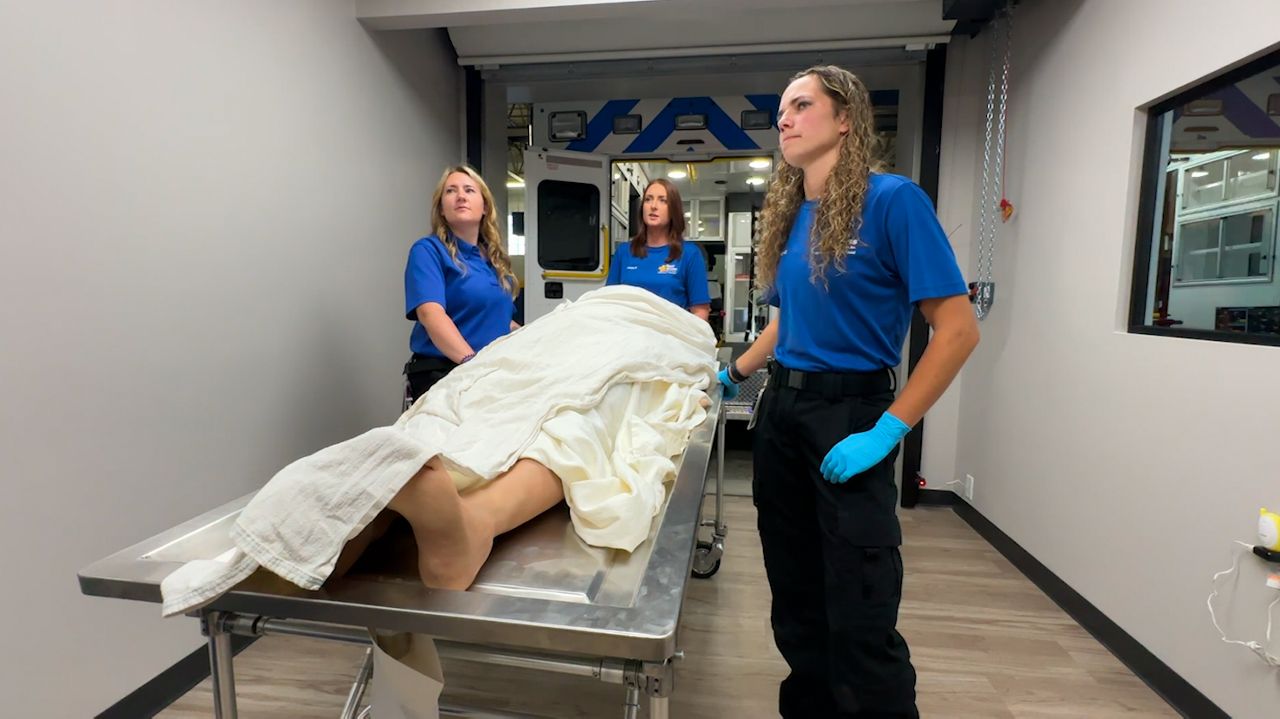MENASHA, Wis. — Brooke Brunner and two of her fellow students were busy making an assessment on a simulated patient at Gold Cross Ambulance Service’s new training center.
Brunner, an Emergency Medical Technician (EMT) at Gold Cross, is training to become a certified paramedic.
“Until you get in contact with patients, touch them, talk to them, every patient is different, every person is different,” Brunner said. “We come in contact with a lot of different types of people and a lot of different types of symptoms, illnesses, diseases, and injuries they present. This gives us the opportunity to see those different things that we could be faced with on a call.”
The simulation room, and a high-fidelity patient simulator mannequin, are part of a new facility Gold Cross opened to advance the careers of emergency personnel like Brunner.
“I think the benefit of this mannequin is the fact that it is as close to a human as you can get,” she said. “We can practice on each other—and we do practice on each other—doing assessments. But we can’t fake certain signs and symptoms patients present.”

Students in the program get paid while learning, in exchange for a minimum of two years of work with Gold Cross. Training is run through an exchange of services with Fox Valley Technical College.
The executive director of Gold Cross Ambulance Services, Nick Romenesko, said he hopes this kind of in-house, paid training attracts more people to the field.
“For the last seven years the workforce has not kept up with the demand,” he said. “We identified many years ago that we needed to do something differently in order to combat the shortage we’re experiencing in this field.”
The U.S. Bureau of Labor Statistics projects the need for more than 16,000 paramedics and EMTs nationwide in the next decade.

“The goal is when they complete training, that transition from classroom to being on the streets as a paramedic is going to be very, very seamless,” Romenesko said. “They should be able to hit the ground running and start providing the best possible patient care.”
Brunner said getting paid to learn through her job as an EMT is key. She already works another job at a Green Bay hospital.
“I don’t really know when I would have been able to go to school,” she said. “Between the clinical hours on the ambulance, working in the ER, and then class time, you’d have to cut down your work hours. You’re also paying for the class, so that takes a huge financial toll on some people. I know for me it would hold me back from going.”












